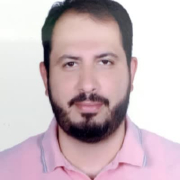What is our primary use case?
I use Cisco routers in my company to provide internet connectivity to all our devices, such as computers and WiFi. Essentially, I use these servers to facilitate internet access for the entire company. HPE is the server we are using in our company.
What is most valuable?
I am satisfied with the tool overall. Although I haven't used all of its features yet, it's been great for providing internet access to both customers, and employees within the company. I'm looking forward to learning more about the other features and using them in the future.
What needs improvement?
I don't think I can improve the tool. For that, I would need to learn all of its features and how to use them. But for now, I am satisfied with the tool because it provides me with what I need. In short, I don't have any idea if I want any improvements in the solution.
Sometimes, I find it hard to learn how some features of the router work. So, these are the issues that may arise when a user might not have knowledge about the product.
For how long have I used the solution?
I have been working with HPE servers since 2019, which adds up to about three to four years. As for Cisco, I have been working with them for two years now, and with Cisco routers specifically, for about one year. I am also working with Cisco Enterprise Routers.
What do I think about the stability of the solution?
I love all Cisco devices since it has a lot of features, including the ones that are essential to me. Stability-wise, I rate this solution a ten out of ten.
What do I think about the scalability of the solution?
The router I am using right now is enough for my needs. There are many features that I would like to use, and I am learning about them. The tool is sufficient for me at present.
The router is the main device in my company. So, everyone who wants to access the internet will go through it. However, I am the only one with access to the router and its features. Thus, all other people have to access the internet through the router as a user without access to its features, and they may not even be aware of the process. They only have access to the internet without the knowledge of how it works. Since I am in the IT section, I have access to all the necessary details.
Which solution did I use previously and why did I switch?
I have experience with Cisco UCS C-Series, HPE ProLiant DL, and Linux, specifically Cisco and HPE.
I haven't worked with routers from vendors other than Cisco. Even at home, I have a small Cisco router. Nowadays, some people use TP-Link and D-Link, but I feel that Cisco is the best for me. For small companies or small houses, Cisco routers are very good.
How was the initial setup?
I had someone help me with the setup process, which wasn't a complicated process. Although it may seem complicated the first time you go through it, doing it a second time, you may not feel that it is a complicated process.
It was not just the router but the whole network, which means there were other devices also. So, the deployment process took just one month.
What about the implementation team?
I received help from a consultant.
What's my experience with pricing, setup cost, and licensing?
The pricing of Cisco routers is reasonable at times. But, here in my country, it is expensive because we get the product from outside our country, which involves a lot of processes. But, outside my country also, I don't think it is reasonable. Only owing to the features it provides, it is reasonable.
I don't know the amount paid by the ones who purchased the solution a few years ago, but I know that they bought the license.
What other advice do I have?
My advice for the people who want Cisco routers is that I think they have to learn how to use them because there are a lot of features that they can use in the solution. But if they don't know how to use it, then they shouldn't buy it. They have to learn everything about the router so that they can use the very good features of the router. So, they need to get knowledge about the router and its features. Once you know how to use it, it's satisfying.
To understand the router and its features, I usually rely on Google, Cisco's website, and occasionally other websites. I find the documentation on the Cisco website to be great since they know how to explain the features well since the routers are their products. I rate this solution a ten out of ten, at times a nine out of ten, but not lower than that.
Disclosure: My company does not have a business relationship with this vendor other than being a customer.















Very reach knowledge Mohamed, keep it up, please.